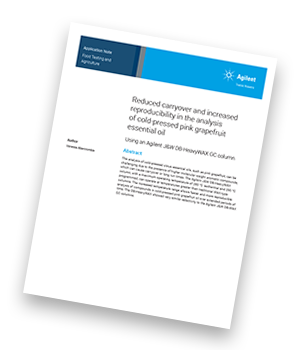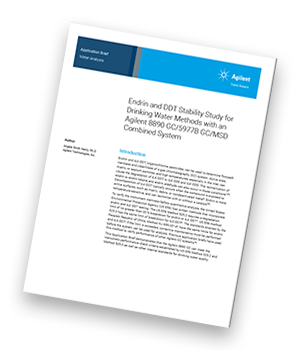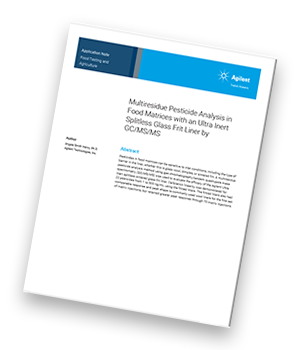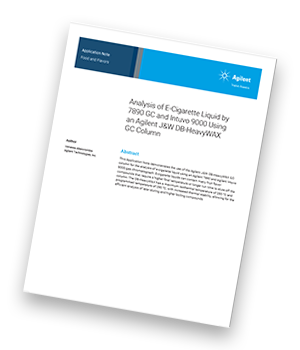Separation Science, in collaboration with Agilent, offers a selection of application notes relevant for food analysis using GC or GC/MS. Find out how to achieve reduced carryover and increased reproducibility in your analyses, perfect your method for meeting drinking water quality standards, improve your method for multiresidue pesticide analysis or learn more about e-cigarette liquid analysis by simply clicking the buttons below.

Reduced Carryover and Increased Reproducibility in the Analysis of Cold‑pressed Pink Grapefruit Essential Oil
This application note demonstrates how the increased temperature range of the Agilent J&W DB-HeavyWAX column allows faster and more reproducible analysis of compounds in cold-pressed pink grapefruit oil over extended periods of time.

Endrin and DDT Stability Study for Drinking Water Methods with an Agilent 8890 GC/5977B GC/MSD Combined System
Endrin and 4,4'-DDT, organochlorine pesticides, can be used to determine flowpath inertness and cleanliness of a GC system. This application brief demonstrates that the Agilent 8890 GC can meet the instrument performance check criteria established by US EPA Method 525.2 and Method 525.3 as well as other internal standards for drinking water quality.
 Multiresidue Pesticide Analysis in Food Matrices with an Ultra Inert Splitless Glass Frit Liner by GC/MS/MS
Multiresidue Pesticide Analysis in Food Matrices with an Ultra Inert Splitless Glass Frit Liner by GC/MS/MS
Pesticides in food matrices can be sensitive to inlet conditions, including the type of barrier in the liner, whether this is glass wool, dimples, or sintered frit. A multiresidue pesticide analysis method using gas chromatography/tandem quadrupole mass spectrometry (GC/MS/MS) was used to evaluate the efficacy of the Agilent Ultra Inert splitless sintered glass frit liner.
 Analysis of E-Cigarette Liquid by 7890 GC and Intuvo 9000 Using an Agilent J&W DB-HeavyWAX GC Column
Analysis of E-Cigarette Liquid by 7890 GC and Intuvo 9000 Using an Agilent J&W DB-HeavyWAX GC Column
This application note demonstrates the use of the Agilent J&W DB-HeavyWAX GC column for the analysis of e-cigarette liquid using an Agilent 7890 and Agilent Intuvo 9000 gas chromatograph. This column has a maximum isothermal temperature of 280 °C and programmed temperature of 290 °C, with increased thermal stability, allowing for the efficient analysis of later eluting and higher boiling compounds.




